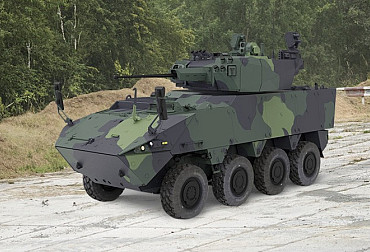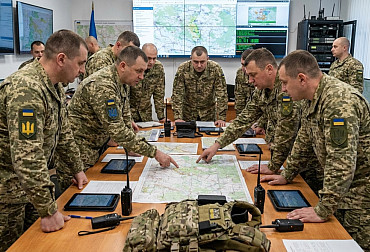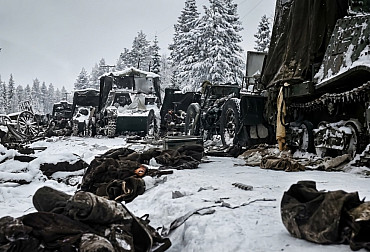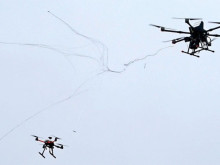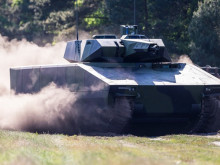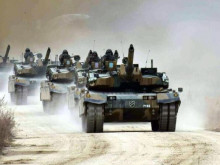Importance of light Multiple Rocket Launchers
Multiple Rocket Launchers represent one of the most interesting, and at the same time the most promising categories of combat equipment. They have been or are being deployed in virtually every current conflict, usually with great success. And all indications show that the importance of Multiple Rocket Launchers will continue to rise.
The category of Multiple Rocket Launchers itself is not only very large, but also incredibly varied. It includes hundreds of types of various calibers and performances, from small, almost primitive types, through classic medium-caliber types, such as the iconic Russian BM-21 type, to state-of-the-art large-caliber rocket launchers capable of launching rockets equipped with guidance devices that can perform tactical or even operational-tactical tasks.
Somewhat in the shadow of these massive and photogenic large-caliber rocket launchers, there are other subcategories of Multiple Rocket Launchers. Light small-caliber rocket launchers, whose caliber does not exceed 100 mm, are becoming more and more popular, and therefore of greater importance, although these rocket launchers have only recently been described as obsolete. It is therefore worth considering them in more detail.
History of Multiple Rocket Launchers
Light Multiple Rocket Launchers became very widespread before and during World War II. These were air and ground rocket launchers, whose caliber did not exceed 100 mm, and often was significantly smaller (usually 70-80 mm). Rockets of smaller calibers, of course, with their range and effect could not match rockets such as the M-13 caliber 132 mm, fired from the famous "Katyusha" rocket launchers, but even so, it turned out that these rocket launchers have their significance.
The career of light Multiple Rocket Launchers continued even after World War II. An interesting, somewhat neglected, type of ground light Multiple Rocket Launcher is the American Slammer type, designed in the early 1970s. Slammer was one of the first American Multiple Rocket Launchers designed after World War II. This rocket launcher was an atypical design.
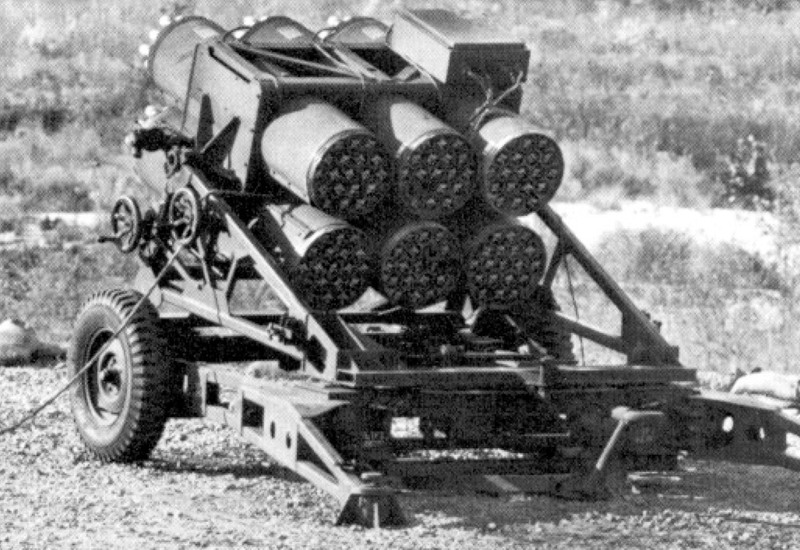 Picture: An interesting, somewhat neglected, type of ground light Multiple Rocket Launcher is the American Slammer type | US Army | CC BY-NC-ND
Picture: An interesting, somewhat neglected, type of ground light Multiple Rocket Launcher is the American Slammer type | US Army | CC BY-NC-ND
It is especially remarkable that this rocket launcher was derived from rocket launchers designed for aircraft - because it used the well-known Mighty Mouse aerial unguided anti-ground rockets, caliber 70mm (2.75 inches). For use in the ground rocket launcher, however, their range was extended by modifying the rocket engine, from 6 km to almost 10 km. These rockets were fired from six connected standard M-200 aircraft rocket launchers, each with nineteen barrels. The Slammer rocket launcher thus had a total of 114 barrels and offered significant firepower, although it could fire at a relatively short distance.
The Slammer rocket launcher has had only a very limited expansion. However, this was mainly due to the fact that at that time the US rather neglected Multiple Rocket Launchers as such; only much later did the United States develop modern, much more powerful MLRS rocket launchers. Nevertheless, the Slammer rocket launcher is of considerable importance. You could even say that this rocket launcher was to some extent ahead of its time. In recent years, a number of ground Multiple Rocket Launchers have appeared, which are based on rocket launchers, resp. rocket launchers originally intended for use on combat aircraft or combat helicopters.
Improvised light Multiple Rocket Launchers
The emergence of a number of modern Multiple Rocket Launchers is directly linked to some of the asymmetric conflicts of today, especially with the civil wars taking place in Syria and Libya. The use of various temporary constructions is typical for these conflicts. This is also due to the fact that the individual parties have a lack of armaments, and the classic conventional armaments, usually dating back to the Cold War, are also less suitable for these conflicts. It is also typical of these conflicts that the air forces of the involved states are limited by embargoes and a lack of spare parts, and many aircraft are therefore grounded. That is why both the insurgents and the government troops are trying to use the armament of these grounded planes and combat helicopters. Light unguided rockets are often used. These are mainly well-known Soviet S-5 rockets caliber 57 mm, fired from UB-16-57 or UB-32-57 launchers, or S-8 rockets caliber 80 mm fired from B-8 launchers, used in Mi-24 helicopters, but also in MiG-21 aircraft, etc. Likewise, some Western unguided air rockets are used.
This created a number of constructions, which, however, have in common some basic features. Usually, the entire original air rocket launchers are used directly; other times only the rockets themselves are used, for which a special rocket launcher is subsequently created. These rocket launchers are often mounted on some type of off-road vehicle, such as the Toyota Land Cruiser, Toyota Hilux or Land Rover. It is thus de facto one of the numerous variants of the so-called technicals (improvised combat vehicles), which is very popular in modern asymmetric conflicts, where one of the variants can be a light self-propelled Multiple Rocket Launchers.
Such provisional light rocket launchers may seem a little funny to us, but practice has clearly shown how successful these light rocket launchers are. After all, this is one of the reasons why new constructions are constantly being created.
Success of light Multiple Rocket Launchers in asymmetric conflicts
The success of light rocket launchers is to some extent due to the asymmetric nature of modern conflicts. It is characteristic of these conflicts that the fighting takes place in very confusing, often urban or mountainous terrain, at a relatively short distance of 5-8 km, sometimes even less. Thus, there is a growing need to have a weapon system operating at this distance. Mortars are usually used for these purposes, but due to their basic characteristics, especially the high trajectory fire ability, they are only suitable for performing part of these tasks.
In addition, it is typical for asymmetric conflicts that there are no clear battle lines. The enemy therefore appears quite unexpectedly, sometimes even in the back of fighting troops. Therefore, there is a need to react as quickly as possible, and literally "flood the enemy" with own firepower.
Technological progress
In the same way, the success of light rocket launchers is determined by the technological progress that can be observed in Multiple Rocket Launchers and especially in the unguided rockets themselves. Virtually all calibers of modern rocket launchers are characterized by an increasingly significant extension of range. This also applies, for example, to the well-known BM-21 rocket launcher. This rocket launcher in its original form, with the original rockets, had a range of only 20 km. Newer 122 mm rockets designed for this rocket launcher (or its various derivatives) have a range of 40 km, and there are also rockets that have a range of up to 50 km. At the same time, it cannot be ruled out that, thanks to technological progress, 122 mm rockets will reach an even higher range.
However, the existence of such powerful 122 mm caliber rockets also changes the deployment of these rocket launchers. Due to the fact that even ordinary 122 mm rocket launchers are able to fire at such a distance, they move to tasks that used to belong more to large-caliber rocket launchers (BM-27 rocket launchers had a range of 45 km, LAR-160 rocket launchers caliber 160 mm have the same range, modernized BM- 21 are therefore equal to them by range, although not by the effect in the target).
On the other hand, these rocket launchers are less suitable for attacking targets located at a shorter distance (up to 10 km), and less significant targets. Their potential in such a case is not used, and sometimes in addition, the high effect of 122 mm rockets can be more to the detriment.
Of course, the economy also plays a role. Those modern 122 mm rockets reaching a range of up to 50 km are significantly more expensive than the classic older types, sometimes coming from the Soviet bloc. Their deployment against less important or poorly protected targets (eg a convoy of off-road vehicles armed with machine guns) is thus very uneconomical.
Light Multiple Rocket Launchers in the armament of today's advanced armies
As already mentioned, most light Multiple Rocket Launchers are temporary types, often existing in only a few copies. Interestingly, however, such light rocket launchers have found their way into the armament of modern advanced armies, although they are mostly of more sophisticated designs.
This created a number of types of light rocket launchers which are very similar. A typical, geographically close to us, type of light Multiple Rocket Launcher is the new Polish W-48 rocket launcher (which was also mentioned in the ATM magazine).
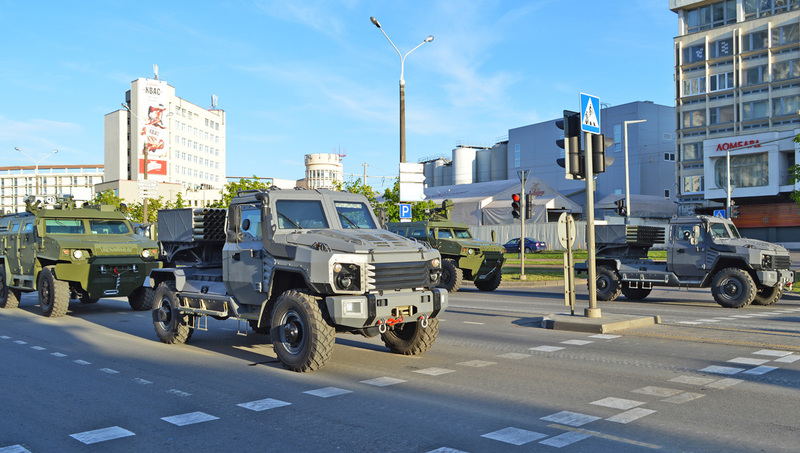 Picture: Flejta rocket launchers (80 mm) at the military parade in Minsk, May 9, 2020 | Militarium / CC BY-NC-ND
Picture: Flejta rocket launchers (80 mm) at the military parade in Minsk, May 9, 2020 | Militarium / CC BY-NC-ND
What is remarkable about the W-48 rocket launcher is that the Polish defense industry embarked on such a project, when the Polish army has a relatively large number of 122 mm WR-40 Langusta rocket launchers (modernized BM-21 with a new chassis). This also shows the importance of light rocket launchers, and the fact that they have a place in the armament of modern armies, where they can serve in addition to conventional medium-range rocket launchers.
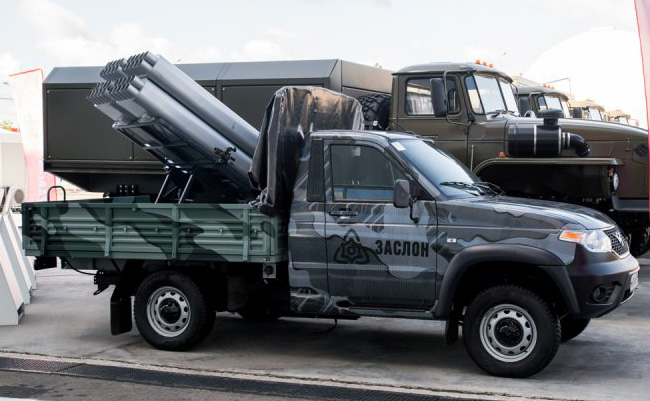 Picture: Light self-propelled "Sel" Multiple Rocket Launcher | Andrey Sergeyev / Mil.Press Today / CC BY-NC-ND
Picture: Light self-propelled "Sel" Multiple Rocket Launcher | Andrey Sergeyev / Mil.Press Today / CC BY-NC-ND
The W-48 rocket launcher represents a very simple, technologically undemanding construction. This rocket launcher uses 70 mm caliber rockets, derived from unguided air rockets. These rockets have a range of up to 8 km. Unlike the mentioned temporary constructions, which often take over entire air rocket launchers, in the case of the W-48 type, a much more sophisticated construction of a completely new rocket launcher was used, which contains 48 launch tubes. It is also important that this rocket launcher is relatively light (1100 kg), and can be mounted on the chassis of a light off-road vehicle.
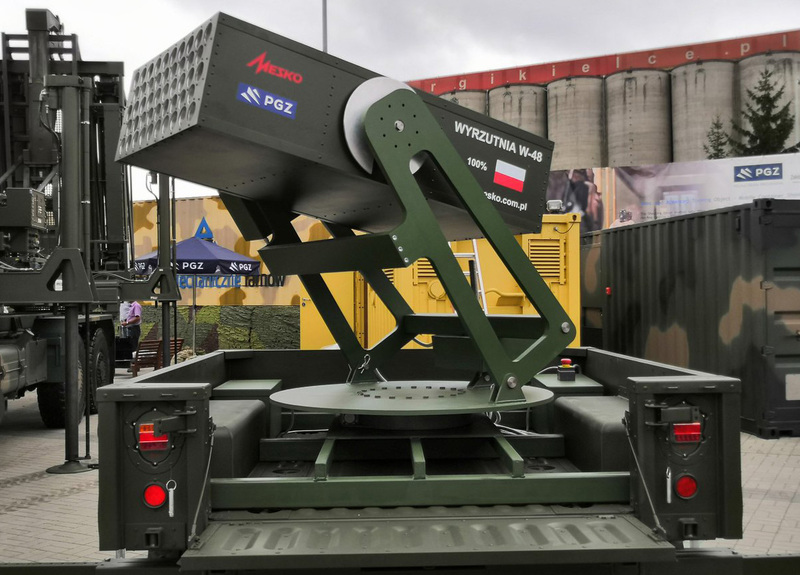 Picture: Polish W-48 rocket launcher | Militarium / CC BY-NC-ND
Picture: Polish W-48 rocket launcher | Militarium / CC BY-NC-ND
Thanks to the relatively high number of rocket launchers and a range of up to 8 km, the W-48 rocket launcher is a relatively effective and efficient weapon. The Polish territorial defense troops, WOT, have already shown interest in this rocket launcher (the relevant contract has not yet been concluded). Some reports also talk about the possibility of exporting to other countries.
Light Multiple Rocket Launcher and the Czech Army
First of all, it can be stated that the Multiple Rocket Launchers are generally missing in the Czech Army’s equipment to a certain extent. And it's not just the well-known 122 mm rocket launchers, such as the RM-70/85 rocket launcher, which has already been phased out. The Czech Army also lacks a system of fire support that would offer a sufficiently powerful firepower and would be able to operate at a shorter distance. For short-range strikes, the Czech Army has mortars 120 mm, capable of firing at approximately the same distance as light rocket launchers (7-8 km), but mortars are, due to their characteristics, able to perform only part of the tasks. In addition, the experience of other countries also suggests that light Multiple Rocket Launchers and mortars complement each other very well.
The construction of such a light rocket launcher is not complicated at all, and their construction could possibly be handled by the Czech defense industry. As with the already mentioned Polish W-48 rocket launcher, it would be a matter of constructing a completely new rocket launcher, which would be structurally very simple, undemanding to production and therefore cheap. It is then a question of exactly what such a rocket launcher should look like, how many tubes it should have, etc. The numbers of tubes vary completely from one foreign type of rocket launcher, from types with only 32 tubes to types with more than 100 tubes. Thus, there is no universal rule, which, however, rather facilitates the construction of such a rocket launcher.
As for the rockets themselves, the Czech Army currently has 80 mm S-8 air rockets. These unguided rockets still serve in the Czech Army as armament of the Mi-35/24V gunships. According to the spokesperson of the General Staff, Colonel Magdalena Dvořáková, the consumption of S-8 rockets is expected until the end of operation of Mi-35/24V attack helicopters, which should be, with regard to the introduction of H-1 series helicopters, in 2024. If for some reason the above-mentioned rockets could not be consumed, they could be used for a possible light rocket launcher. If the rockets were no longer available, they could still be purchased abroad - with light unguided rockets of this type being very cheap and readily available on the market today. In the same way, some western light air unguided rockets can be used, such as the well-known Hydra 70 mm rockets or their various copies. Here it can be recalled that on the current market, these rockets are also available in a version with a simple guidance system. Although such rockets are more expensive than conventional unguided rockets (yet they are still very cheap), on the other hand, the use of these guided rockets would significantly enhance the value of a light rocket launcher.
I see an important advantage of the light Multiple Rocket Launcher in its weight, thanks to which it could be mounted on the chassis of a light passenger off-road car. The result would be a very cheap and yet sufficiently effective light self-propelled Multiple Rocket Launcher. Of course, such a light rocket launcher would not be suitable for a heavy brigade, such as the 7th Mechanized Brigade within the Czech Army; a heavier, more powerful type would be more suitable for this.
Thus, a light Multiple Rocket Launcher may represent a path that is somewhat overlooked in our country, but which could cheaply strengthen our defenses and at the same time bring benefit to our defense industry.
















